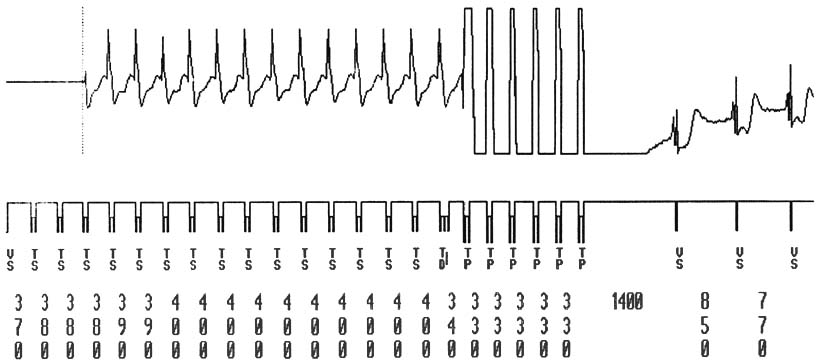 |
 |
Figure 35-8
Unexpected ventricular tachycardia with antitachycardia
pacing (ATP) was found in this patient during her preoperative visit. A 65-year-old
woman with a history of ventricular tachycardia (VT) had undergone implantation of
a Medtronic single-chamber defibrillator about 8 months earlier. She had no dizziness
or syncopal episodes since the implantable cardioverter-defibrillator (ICD) placement.
Interrogation of her device in the preoperative center revealed VVE-VVI programming,
along with an episode of tachycardia at 150 to 162 beats/min that was detected by
the ICD as VT. The ICD delivered a 6-beat burst of antitachycardia pacing at 182
beats/min, which converted the tachycardia back to sinus rhythm. No backup antibradycardia
pacing was needed after the VT was terminated. The upper tracing
is a digitized ventricular electrogram that was stored in the ICD during the tachycardic
event. The lower tracing is the marker channel that
reports the interpretation of the ICD for each event. The numbers below the marker
channel represent the interval (in milliseconds). The heart rate is calculated by
dividing the interval into 60,000 msec/min. TS represents an interval in the VT
zone, TD marks the final event that starts therapy, TP is an ATP event, and VS is
an intrinsic ventricular depolarization with a rate that is neither too fast (short
interval) nor too slow (long interval). This device was set to detect VT as 16 consecutive
ventricular events with a rate between 146 and 200 beats/min and to deliver ATP at
84% of the last R-R interval. The last interval was 400 msec, so ATP was delivered
at a rate of 182 beats/min (330-msec intervals).

 |
